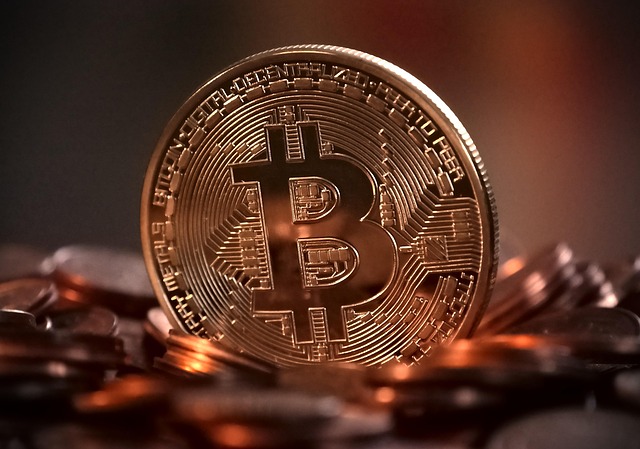EU could fine Elon Musk’s X $1B over illicit content, disinformation
European Union regulators are reportedly mulling a $1 billion fine against Elon Musk’s X, taking into account revenue from his other ventures, including Tesla and SpaceX, according to The New York Times.EU regulators allege that X has violated the Digital Services Act and will use a section of the act to calculate a fine based on revenue that includes other companies Musk controls, according to an April 3 report by the newspaper, which cited four people with knowledge of the plan.Under the Digital Services Act, which came into law in October 2022 to police social media companies and “prevent illegal and harmful activities online,” companies can be fined up to 6% of global revenue for violations.A spokesman for the European Commission, the bloc’s executive branch, declined to comment on this case to The New York Times but did say it would “continue to enforce our laws fairly and without discrimination toward all companies operating in the EU.”In a statement, X’s Global Government Affairs team said that if the reports about the EU’s plans are accurate, it “represents an unprecedented act of political censorship and an attack on free speech.”“X has gone above and beyond to comply with the EU’s Digital Services Act, and we will use every option at our disposal to defend our business, keep our users safe, and protect freedom of speech in Europe,” X’s global government affairs team said.Source: Global Government AffairsAlong with the fine, the EU regulators could reportedly demand product changes at X, with the full scope of any penalties to be announced in the coming months. Still, a settlement could be reached if the social media platform agrees to changes that satisfy regulators, according to the Times. One of the officials who spoke to the Times also said that X is facing a second investigation alleging the platform’s approach to policing user-generated content has made it a hub of illegal hate speech and disinformation, which could result in more penalties.X EU investigation ongoing since 2023The EU investigation began in 2023. A preliminary ruling in July 2024 found X had violated the Digital Services Act by refusing to provide data to outside researchers, provide adequate transparency about advertisers, or verify the authenticity of users who have a verified account.Related: Musk says he found ‘magic money computers’ printing money ‘out of thin air’X responded to the ruling with hundreds of points of dispute, and Musk said at the time he was offered a deal, alleging that EU regulators told him if he secretly suppressed certain content, X would escape fines. Thierry Breton, the former EU commissioner for internal market, said in a July 12 X post in 2024 that there was no secret deal and that X’s team had asked for the “Commission to explain the process for settlement and to clarify our concerns,” and its response was in line with “established regulatory procedures.” Musk replied he was looking “forward to a very public battle in court so that the people of Europe can know the truth.”Source: Thierry BretonMagazine: XRP win leaves Ripple a ‘bad actor’ with no crypto legal precedent set
Altcoins are set for one last big rally, but just a few will benefit — Analyst
Altcoins may have just one last rally this cycle, but only those with real utility and strong network activity will see price gains, according to an analyst. “I think there will be one more breadth thrust from altcoins. The question is, is it a sustained rally that we will see for six to twelve months,” Real Vision chief crypto analyst Jamie Coutts told Real Vision co-founder Raoul Pal on an April 3 X livestream.Network activity will be the ‘north star’ for how to trade crypto“At this stage, I am not too sure, but I do believe that quality altcoins where activity returns, activity drives prices …we will definitely see a recovery in some of these more high-quality names,” Coutts said.Cointelegraph reported in January that there were over 36 million altcoins in existence. However, Ethereum still holds the majority share of total value locked (TVL) with 55.56%, followed by Solana (6.89%), Bitcoin (5.77%), BNB Smart Chain (5.68%), and Tron (5.54%), according to CoinGecko data.Coutts said traders should watch where the network activity “is gravitating” and use that as their “north star” for how to trade in crypto, adding he sees an altcoin market upswing within the next two months. “I’m expecting by June to see altcoins really start to pick up again. Predicated on the fact that Bitcoin is back at all-time highs by that point.”On March 28, Coutts told Cointelegraph that Bitcoin could reach all-time highs before the end of Q2 regardless of whether there is more clarity on US President Donald Trump’s tariffs and potential recession concerns.The total crypto market cap is down around 8% over the past 30 days. Source: CoinMarketCapBlockchain network activity across the board has recently experienced sharp declines amid a broader crypto market downturn. On Feb. 21, Cointelegraph reported that the number of active addresses on the Solana (SOL) network fell to a weekly average of 9.5 million in February, down nearly 40% from the 15.6 million active addresses in November 2024.Altcoin indicators are flashing redMeanwhile, several key indicators the crypto industry uses to determine an incoming altcoin season suggest it’s still nowhere in sight.Capriole Investments’ Altcoin Speculation Index has dropped to 12%, down 53% since Dec. 25, the same period during which Ether fell 49% from $3,490, according to CoinMarketCap data.Related: When will altseason arrive? Experts reveal what’s holding back altcoinsCoinMarketCap’s Altcoin Season Index, which measures the top 100 cryptocurrencies against Bitcoin’s performance over the past 90 days, is reading a score of 14 out of 100, leaning toward a more Bitcoin-dominated market, referring to it as “Bitcoin Season.”The Altcoin Season Index Chart is sitting at 14 at the time of publication. Source: CoinMarketCapHowever, while Bitcoin dominance — a level often watched for retracements that signal an altcoin season — sits at 62.84%, some analysts argue it’s no longer as relevant as a signal for altcoin season.CryptoQuant CEO Ki Young Yu recently said that Bitcoin Dominance “no longer defines altseason — trading volume does.”Magazine: New ‘MemeStrategy’ Bitcoin firm by 9GAG, jailed CEO’s $3.5M bonus: Asia ExpressThis article does not contain investment advice or recommendations. Every investment and trading move involves risk, and readers should conduct their own research when making a decision.
Genius Group says it’s been banned from buying more Bitcoin
Singapore-based artificial intelligence firm Genius Group says it’s temporarily barred from expanding its Bitcoin treasury after a US court order has banned it from selling shares, raising funds and using investor funds to buy more Bitcoin.A New York District court issued the preliminary injunction (PI) and temporary restraining order (TRO) on March 13 in connection with a broader dispute surrounding its merger with Fatbrain AI, the Genius Group said in an April 3 statement.Fatbrain AI and Genius Group completed a merger and purchase agreement in March 2024, but by Oct. 30, Genius initiated arbitration procedures to terminate, alleging fraud by Fatbrain AI executives connected to the deal.Source: Roger James HamiltonIn February, Fatbrain AI executives Michael Moe and Peter Ritz filed for the TRO and permanent injunction, blocking Genius Group from selling its shares, raising funds and buying more Bitcoin pending the arbitration outcome. The injunction has forced Genius Group to close divisions, halt marketing activities and sell 10 Bitcoin (BTC) from its stash of 440, worth over $23 million at current prices, to continue funding its operations. The firm hasn’t ruled out more sales in the future.“Genius is taking all necessary measures to minimize Bitcoin sales but anticipates that it will need to downsize its Bitcoin Treasury in the coming months in the event the PI remains in place,” the firm said.Fatbrain AI shareholders also filed two lawsuits against Fatbrain AI executives, including Moe and Ritz, and Genius Group, in April 2024, alleging violation of federal securities laws in connection with the merger, ASX law said in an October statement. Two shareholder lawsuits against Fatbrain AI alleged conduct during the merger was fraudulent, which defrauded shareholders of $30 million. Source: ASX LawGenius Group was subsequently voluntarily dismissed from the suits on Feb. 14. Genius Group claims it’s breaking Singapore law by following order Genius Group says the US court injunction has also forced it to break Singapore law by halting share compensation to employees as part of its employment agreements.“We never dreamed that it was possible that a US court could block the company from being able to issue shares, raise funds or buy Bitcoin — all actions that would normally be decided by a public company’s shareholders or Board rather than a court,” said Genius Group CEO Roger James Hamilton.Related: Rumble embraces Trump-era crypto strategy with $17M BTC purchaseHe said the firm will “continue to fly the flag for Bitcoin,” even when legally banned from building out its treasury.Fatbrain AI didn’t immediately respond to Cointelegraph’s request for comment.Artificial intelligence firm Genius Group first announced in November 2024 that it had taken the first steps to build a Bitcoin treasury by purchasing 110 Bitcoin for $10 million.The firm had earlier announced its overall goal of committing 90% or more of its current and future reserves to be held in Bitcoin, with an initial target of $120 million, which saw the stock price surge by 66%. Genius Group’s share price is down 9.80% in the last trading session to $0.23, with a further 3.74% drop after the bell to $0.22, Google Finance data shows.Genius Group’s share price went down during the last trading session and after the bell. Source: Google Finance The stock hit an all-time high of over $96 in June 2022 but has since lost over 99% of its value.
Binance co-founder Changpeng Zhao to advise Kyrgyzstan on blockchain tech
Former Binance CEO Changpeng “CZ” Zhao will begin advising the Kyrgyz Republic on blockchain and crypto-related regulation and tech after signing a memorandum of understanding with the country’s foreign investment agency.“I officially and unofficially advise a few governments on their crypto regulatory frameworks and blockchain solutions for gov efficiency, expanding blockchain to more than trading,” the crypto entrepreneur said in an April 3 X post, adding that he finds this work “extremely meaningful.”His comments came in response to an earlier X post from Kyrgyzstan President Sadyr Zhaparov announcing that Kyrgyzstan’s National Investment Agency (NIA) had signed a memorandum with CZ to provide technical expertise and consulting services for the Central Asian country.The NIA is responsible for promoting foreign investments and assisting international companies in identifying business opportunities within the country.Source: Changpeng Zhao“This cooperation marks an important step towards strengthening technological infrastructure, implementing innovative solutions, and preparing highly qualified specialists in blockchain technologies, virtual asset management, and cybersecurity,” Zhaparov said.The Kyrgyzstan president added: “such initiatives are crucial for the sustainable growth of the economy and the security of virtual assets, ultimately generating new opportunities for businesses and society as a whole.”Kyrgyzstan, which officially changed its name from the Republic of Kyrgyzstan to the Kyrgyz Republic in 1993, is a mountainous, land-locked country. It is considered well-suited for crypto mining operations due to its abundant renewable energy resources, much of which is underutilized.Over 30% of Kyrgyzstan’s total energy supply comes from hydroelectric power plants, but only 10% of the country’s potential hydropower has been developed, according to a report by the International Energy Agency.CZ has met with several other state officials in AsiaMalaysia also recently tapped CZ for guidance on crypto-related matters, with Prime Minister Anwar Ibrahim meeting him personally in January.CZ has also met with officials in the UAE and Bitcoin-stacking country Bhutan — however, it isn’t clear what those meetings entailed.Related: Is Bitcoin’s future in circular economies or national reserves?CZ’s latest pursuits come a little over six months after he was released from a four-month prison sentence in the US for violating several anti-money laundering laws.Since being released, CZ has made investments in blockchain tech, artificial intelligence and biotechnology companies.CZ also recently donated 1,000 BNB (BNB) — worth almost $600,000 — to support earthquake relief efforts in Thailand and Myanmar after the natural disaster in late April.Magazine: Financial nihilism in crypto is over — It’s time to dream big again
Investor demand for XRP falls as the bull market stalls — Will traders defend the $2 support?
Between Oct. 25, 2024, and Jan. 16, 2025, XRP (XRP) had one of the best rallies of the current bull market, gaining 600% as investors piled in with the hope that a pro-crypto presidency would benefit Ripple and its cryptocurrency. During this time, the quarterly average of daily active addresses jumped by 490% and XRP price hit a 7-year high.XRP’s 1-day chart. Source: Cointelegraph/TradingViewFast forward to the present, and data shows that the speculative interest surrounding XRP is declining. Holders are increasingly facing losses rather than gains, which is dampening their risk appetite. “Retail confidence in XRP may be slipping”Since bottoming in 2022, Bitcoin (BTC) and XRP have gained 500% to 600%, but the bulk of XRP’s gains came from a parabolic price increase. Data from Glassnode shows that XRP daily active addresses jumped by 490%, whereas the same metric for Bitcoin increased by 10% over the past four months. XRP’s new investor realized the cap. Source: GlassnodeThis retail-driven surge pushed XRP’s realized cap from $30.1 billion to $64.2 billion, with $30 billion of that inflow coming from investors in the last six months. The share of XRP’s realized cap held by new investors (less than six months) jumped from 23% to 62.8%, signaling a rapid wealth shift. However, since late February 2025, capital inflows have dipped significantly. XRP realized profit/loss ratio. Source: GlassnodeThe primary reason is that investors are currently locking in fewer profits and staring at higher losses. This can be identified by the realized loss/profit ratio, which has constantly declined since 2025. Glassnode analysts said, “Given the retail-dominated inflows and largely concentrated wealth in relatively new hands, this alludes to a condition where retail investor confidence in XRP may be slipping, and this may also be extended across the broader market.”Besides weakening confidence among newer investors, the distribution of XRP among whale addresses reflects a similar trend. Data shows a steady increase in whale outflows since the start of 2025, suggesting that large holders have been consistently trimming their positions. Over the past 14 days, over $1 billion in positions were offloaded at an average price of $2.10. Whale flow 30-day moving average. Source: CryptoQuantRelated: How many US dollars does XRP transfer per day?Can XRP hold the $2 support?XRP has found support at $2 multiple times over the past few weeks, but the chance of the altcoin dropping below this level increases with each retest. XRP 4-hour chart. Source: Cointelegraph/TradingViewHowever, on the lower time frame (LTF) of the 1-hour and 4-hour charts, a bullish divergence can be observed for XRP. A bullish divergence occurs when the price forms a lower low and the relative strength index (RSI) forms a lower high. With a fair value gap between $2.08 and $2.13, XRP might see a relief rally into this range, especially if the wider crypto market undergoes an oversold bounce. On the higher time frame chart, XRP appears bearish due to the formation of an inverse head-and-shoulders pattern, with a measured target near $1.07. There is a chance that the altcoin finds support from the 200-day moving average (orange line) around the $1.70 to $1.80 mark, but XRP price has not tested this level since Nov. 5, 2024. XRP 1-day chart. Source: Cointelegraph/TradingViewRelated: Bitcoin drops 8%, US markets shed $2T in value — Should traders expect an oversold bounce?This article does not contain investment advice or recommendations. Every investment and trading move involves risk, and readers should conduct their own research when making a decision.
DeFi TVL falls 27% while AI, social apps surge in Q1: DappRadar
Economic uncertainty and a major crypto exchange hack pushed down the total value locked in decentralized finance (DeFi) protocols to $156 billion in the first quarter of 2025, but AI and social apps gained ground with a rise in network users, according to a crypto analytics firm.“Broader economic uncertainty and lingering aftershocks from the Bybit exploit” were the main contributing factors to the DeFi sector’s 27% quarter-on-quarter fall in TVL, according to an April 3 report from DappRadar, which noted that Ether (ETH) fell 45% to $1,820 over the same period.Change in DeFi total value locked between Jan. 2024 and March 2025. Source: DappRadarThe largest blockchain by TVL, Ethereum, fell 37% to $96 billion, while Sui was the hardest hit of the top 10 blockchains by TVL, falling 44% to $2 billion.Solana, Tron and the Arbitrum blockchains also had their TVLs slashed over 30%.Meanwhile, blockchains that experienced a larger volume of DeFi withdrawals and had a smaller share of stablecoins locked in their protocols faced extra pressure on top of the falling token prices.The newly launched Berachain was the only top-10 blockchain by TVL to rise, accumulating $5.17 billion between Feb. 6 and March 31, DappRadar noted.Market fall didn’t stunt AI and social app user growthHowever, the number of daily unique active wallets (DUAW) interacting with AI protocols and social apps increased 29% and 10%, respectively, in Q1, while non-fungible token and GameFi protocols regressed, DappRadar’s data shows.The monthly average of DUAWs interacting on the AI and social protocols rose to 2.6 million and 2.8 million, while DeFi and GameFi protocols fell double-digits. DappRadar said there was “explosive growth” in AI agent protocols, stating that they’re “no longer a concept.”“They’re here, and they’re shaping new user behaviors,” said the firm. Change in DeFi total value locked between Jan. 2024 and March 2025. Source: DappRadarRelated: Avalanche stablecoins up 70% to $2.5B, AVAX demand lacks DeFi deploymentMeanwhile, NFT trading volume fell 25% to $1.5 billion, with OKX’s NFT marketplace taking in the most sales at $606 million, while OpenSea and Blur saw $599 million and $565 million, respectively.Pudgy Penguins NFTs were the most sold collectibles at $177 million, while CryptoPunks NFTs netted $63.6 million from just 477 sales, DappRadar noted.“When analyzing top collections, CryptoPunks remains a staple — its prestige remains intact even as price fluctuations make it largely inaccessible for the average user.”Magazine: XRP win leaves Ripple a ‘bad actor’ with no crypto legal precedent set
Gemini to open Miami office after judge stays SEC case
The cryptocurrency exchange Gemini, backed by Cameron and Tyler Winklevoss, plans to move into a Miami-area office space, as US Securities and Exchange Commission (SEC) enforcement case may have reached its end.According to a March 31 post from Sterling Bay Properties, Gemini signed a lease for an office in Miami’s Wynwood Art District. The move would expand the exchange’s offices from Europe and New York to Florida, where some crypto companies are headquartered.Bloomberg reported Gemini was expected to move into the Miami office by May. Cointelegraph reached out to the exchange for comment but did not receive a response at the time of publication.Wrapping up regulatory issues?The move to Florida came amid a federal judge ordering a 60-day stay on the SEC’s lawsuit against Gemini Global Capital “to allow the parties to explore a potential resolution.” The enforcement action, filed in January 2023, alleges the crypto firm offered and sold unregistered securities through its Gemini Earn program. Cameron Winklevoss said in February that the regulator had closed an investigation into a separate matter involving Gemini. The firm also agreed in January to a $5 million penalty imposed by the US Commodity Futures Trading Commission over alleged “false and misleading” statements related to its 2017 bid to offer Bitcoin (BTC) futures contracts.Related: Crypto PAC-backed Republicans win US House seats in Florida special electionsGemini reportedly filed confidentially for an initial public offering (IPO) earlier this year. The exchange may have pursued an IPO as early as 2021 before shares of many US-based crypto firms were publicly traded. Several crypto firms have regional offices in Miami, possibly due to Florida’s seemingly favorable regulatory environment and the lack of state income tax for residents. Ripple Labs has an office in the Wynwood neighborhood, not far from Gemini’s future location, and BTC miner MARA Holdings is headquartered in Fort Lauderdale.Magazine: Crypto City: The ultimate guide to Miami
EigenLayer to begin 'slashing' restakers in April
EigenLayer plans to start “slashing” restakers on April 17, resulting in the Ethereum restaking protocol’s “first feature-complete iteration,” it said in an April 2 announcement. Implementing slashing will mark EigenLayer’s final step toward establishing the protocol as “infrastructure for a new generation of verifiable apps and services built on the Verifiable Cloud,” it said in a post on the X platform.In 2024, EigenLayer started distributing rewards — including emissions of its native EIGEN token — to incentivize restakers. However, slashing has so far been limited to EigenLayer’s testnets.Once slashing is live, node operators and restakers will be able to voluntarily “opt-in,” resulting in a gradual transition for users, EigenLayer said in a blog post.Slashing starts on EigenLayer’s mainnet soon. Source: EigenLayerRelated: EigenLayer eyes consumer adoption post EIGEN unlock, founder saysGradual roll-outLaunched in 2023, EigenLayer secures third-party protocols — dubbed actively validated services (AVSs) — against a pool of “restaked” cryptocurrencies used as collateral. Restaking involves taking a token that has already been staked — posted as collateral with a validator in exchange for rewards — and using it to secure other protocols simultaneously. Slashing is the primary method for securing proof-of-stake protocols — including Ethereum as well as “restaking” protocols such as EigenLayer — and involves penalizing a network’s node operators for poor performance or misbehavior.“If Operators do not meet the conditions set, the AVS may penalize them. But, if the Operator runs the service successfully, AVSs can reward the Operator’s performance and incentivize specific activity,” EigenLayer said in an April 3 blog post. This “allows for a free marketplace where Operators can earn rewards for their work and AVSs can launch verifiable services,” the post said. EigenLayer’s total value locked (TVL) over time. Source: DeFILlamaGrowing ecosystemUpward of 30 AVSs are already live on EigenLayer’s mainnet, and dozens more are being developed.They include EigenDA — run by EigenLayer developer Eigen Labs — and ARPA Network, a protocol specializing in trustless randomization.In October, EigenLayer unlocked its native token, EIGEN. It is designed as a more flexible option for securing consensus-based protocols than other proof-of-stake tokens, such as Ether, according to EigenLayer.EigenLayer is prioritizing onboarding crypto-native apps in segments such as decentralized finance (DeFi) and gaming before expanding beyond Web3, founder Sreeram Kannan told Cointelegraph in October. “We’re starting with the inside-out approach, focusing on high-throughput consumer apps like DeFi and gaming, but once we grow a little bigger and have critical mass, we’ll go outside and start targeting broader consumer markets,” Kannan said.Magazine: XRP win leaves Ripple a ‘bad actor’ with no crypto legal precedent set








